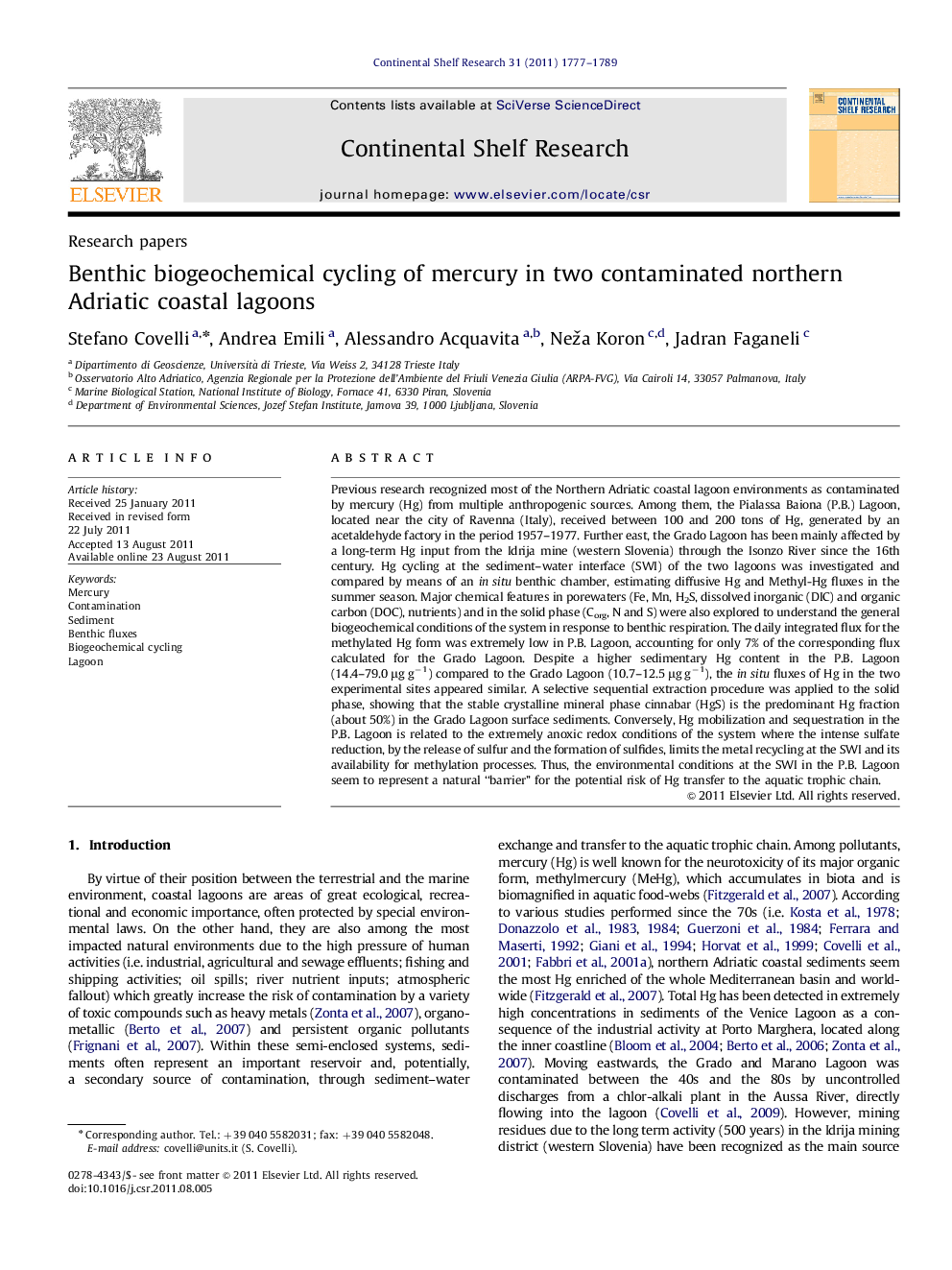| کد مقاله | کد نشریه | سال انتشار | مقاله انگلیسی | نسخه تمام متن |
|---|---|---|---|---|
| 4532532 | 1325127 | 2011 | 13 صفحه PDF | دانلود رایگان |

Previous research recognized most of the Northern Adriatic coastal lagoon environments as contaminated by mercury (Hg) from multiple anthropogenic sources. Among them, the Pialassa Baiona (P.B.) Lagoon, located near the city of Ravenna (Italy), received between 100 and 200 tons of Hg, generated by an acetaldehyde factory in the period 1957–1977. Further east, the Grado Lagoon has been mainly affected by a long-term Hg input from the Idrija mine (western Slovenia) through the Isonzo River since the 16th century. Hg cycling at the sediment–water interface (SWI) of the two lagoons was investigated and compared by means of an in situ benthic chamber, estimating diffusive Hg and Methyl-Hg fluxes in the summer season. Major chemical features in porewaters (Fe, Mn, H2S, dissolved inorganic (DIC) and organic carbon (DOC), nutrients) and in the solid phase (Corg, N and S) were also explored to understand the general biogeochemical conditions of the system in response to benthic respiration. The daily integrated flux for the methylated Hg form was extremely low in P.B. Lagoon, accounting for only 7% of the corresponding flux calculated for the Grado Lagoon. Despite a higher sedimentary Hg content in the P.B. Lagoon (14.4–79.0 μg g−1) compared to the Grado Lagoon (10.7–12.5 μg g−1), the in situ fluxes of Hg in the two experimental sites appeared similar. A selective sequential extraction procedure was applied to the solid phase, showing that the stable crystalline mineral phase cinnabar (HgS) is the predominant Hg fraction (about 50%) in the Grado Lagoon surface sediments. Conversely, Hg mobilization and sequestration in the P.B. Lagoon is related to the extremely anoxic redox conditions of the system where the intense sulfate reduction, by the release of sulfur and the formation of sulfides, limits the metal recycling at the SWI and its availability for methylation processes. Thus, the environmental conditions at the SWI in the P.B. Lagoon seem to represent a natural “barrier” for the potential risk of Hg transfer to the aquatic trophic chain.
► We compare mercury biogeochemical behavior at the sediment–water interface in two highly contaminated lagoon environments.
► Mercury benthic fluxes were similar in spite of different concentrations and speciation in sediments.
► Methylmercury benthic fluxes were low where extremely anoxic conditions occur in sediments.
► Anoxic conditions can provide a natural barrier for mercury methylation and transfer to the food chain.
Journal: Continental Shelf Research - Volume 31, Issue 16, 15 October 2011, Pages 1777–1789